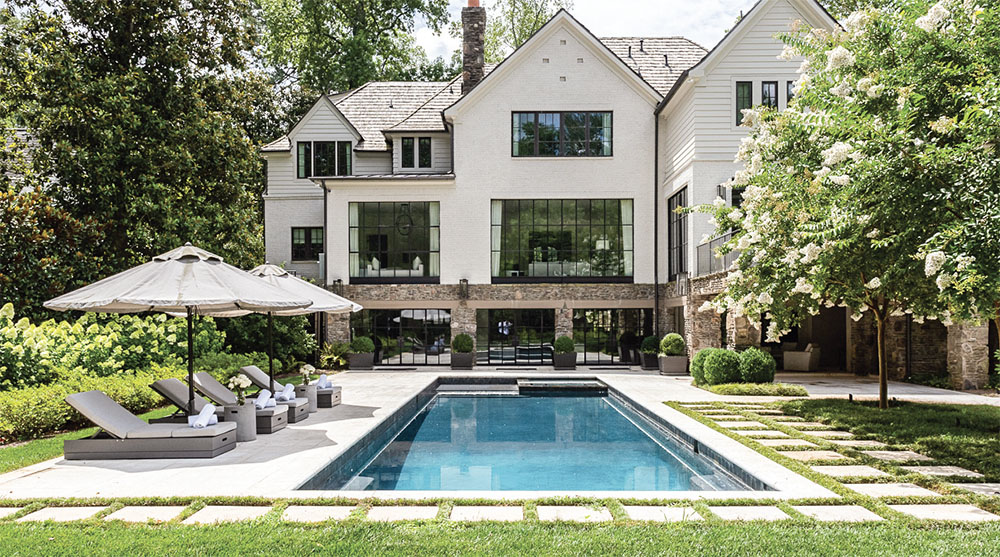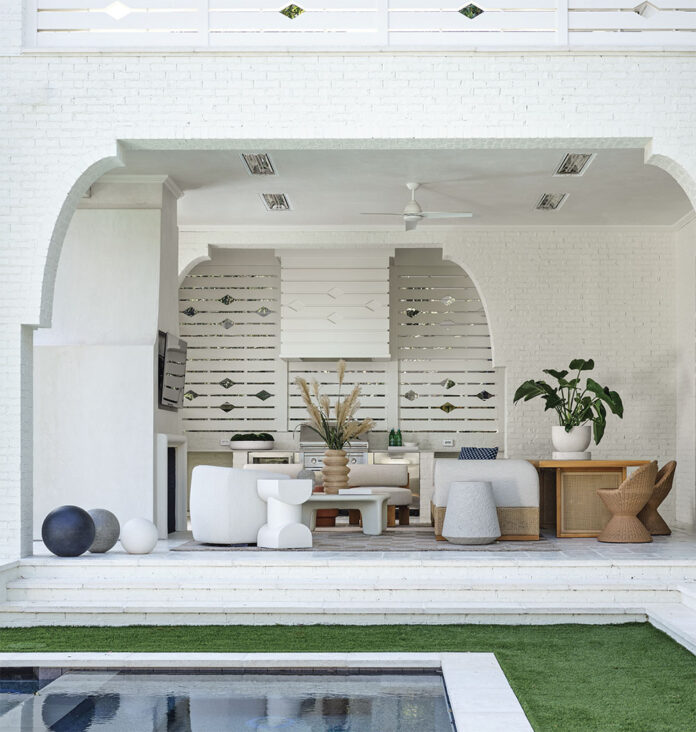Text: Linda MaCarthur, AIA
Summertime is not the only time that it’s easy to be outside. In the South, with our temperate climate and easygoing lifestyle, we can be outside year-round, and this seems to be a trend we’re seeing all over the country. In fact, outdoor living has become an obsession, and as architects, we love it. Long-standing historical references as well as new trends make outdoor living areas one of the favorite parts of any house.
Your home should add to your wellness, and it’s the connectivity to the world outside that provides a sense of well-being. Without even realizing it, our circadian rhythms are set by observing natural light throughout the day. Being in a transitional space, such as a front or rear porch, allows for that important engagement that helps regulate those circadian rhythms.
As an architect, I’ve always found it insightful to know a bit about the past and how outdoor spaces have evolved to become today’s outdoor living areas. The most impactful architects in history were the ancient Greeks. The ideal in Greek architecture was to have a building sitting in the landscape as a monument—like the Parthenon sitting on top of the Acropolis. As one gazed up from afar, the temple loomed heroic and solitary.
 The Romans—who were great copyists of the Greeks—borrowed the temple form and brought it into a denser urban environment so that it shared space with other buildings. The Romans subscribed to the idea that the building was part of a larger composition, with open space in front of the temple so that the building would be part of an experience. There was a sequence of events for approaching and entering the building that often included a portico, which was essentially the first iteration of a porch. One came to that porch area before entering the temple, and the idea was that the negative space outside became as important as the structure itself. Soon that negative outdoor space included elements of design such as a fountain. There are multitudes of examples, but one familiar one is Lincoln Center and the plaza that acts as a preamble to attending a concert or opera inside the temple-style building.
The Romans—who were great copyists of the Greeks—borrowed the temple form and brought it into a denser urban environment so that it shared space with other buildings. The Romans subscribed to the idea that the building was part of a larger composition, with open space in front of the temple so that the building would be part of an experience. There was a sequence of events for approaching and entering the building that often included a portico, which was essentially the first iteration of a porch. One came to that porch area before entering the temple, and the idea was that the negative space outside became as important as the structure itself. Soon that negative outdoor space included elements of design such as a fountain. There are multitudes of examples, but one familiar one is Lincoln Center and the plaza that acts as a preamble to attending a concert or opera inside the temple-style building.
How does this relate to your back porch? Actually, for architects, a lot! We look at your entire building site as a spatial experience for opportunities to create outdoor rooms. Your house sits in a yard surrounded by what we call negative space, and your outdoor living is what goes in that negative space. Should your outdoor spaces reside in the rear of the house, or do you want a porch in the front as well? Is there a front porch culture in your neighborhood or on your street? Where is the best place to be outside, and how does that work with your outdoor activities? Architects think of ways to arrange all of this to create a cohesive environment and form a composition that is both delightful and useful.
 While architects employ materials that suit the exterior of the house, we also frequently use finishes that relate to other elements, such as paving stones, garden walls, or whatever is speaking to us to help us create a unique experience that relates to your indoor spaces.
While architects employ materials that suit the exterior of the house, we also frequently use finishes that relate to other elements, such as paving stones, garden walls, or whatever is speaking to us to help us create a unique experience that relates to your indoor spaces.
Whatever a client desires in a backyard can be achieved through thoughtful composition that defines areas for both active pursuits and quieter endeavors. There can be areas for group sports, such as pickleball, tennis, and swimming, while other areas can be dedicated to cooking, dining, and conversations. Additionally, the backyard should be as attractive as the front, so hardscape and landscape planning are equally important. Whether one wants to be in the sun or the shade, whether exercising with several others or reading alone, or simply enjoying a respite from the four walls of the house, outdoor living is important psychologically and physically. Regardless of your preferences, get outside!









